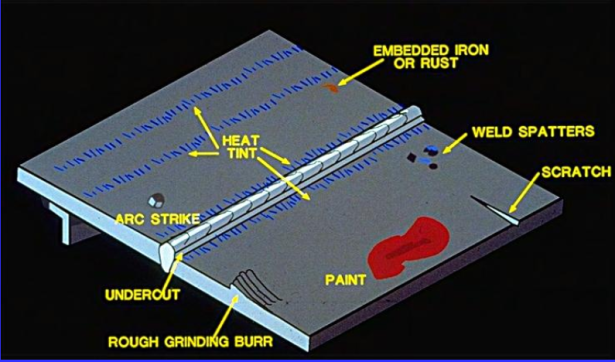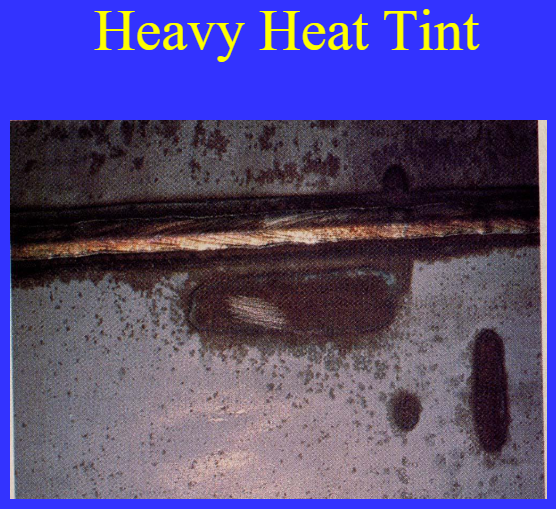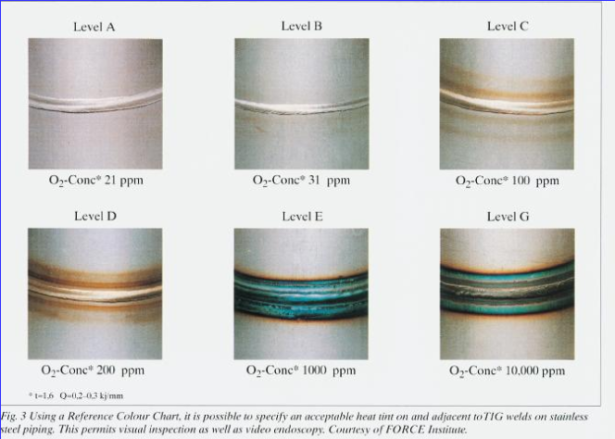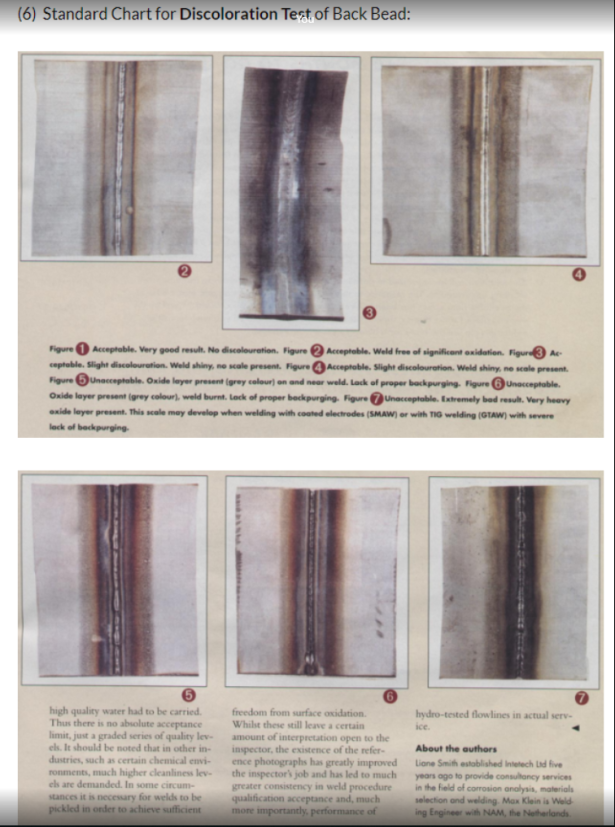Heat tint (temper) colours on stainless steel surfaces
The colour formed when stainless steel is heated, either in a furnace application or in the heat affected zone of welds, is dependent on several factors that are related to the oxidation resistance of the steel.


The heat tint or temper colour formed is caused by the progressive thickening of the surface oxide layer and so, as temperature is increased, the colours change.


- SS have a thin passive layer on their surface:
- With exposure to O2 at high temperature (400–1300F) a thin “straw tinted” Cr2O3 layer forms
- As a result a Cr depleted layer forms beneath the heat tint
-
With additional exposure and additional O2 pickup the Cr2O3 layer becomes unstable
-
A more volatile CrO3 “dark blue/black” layer is formed
-
There is an increase in Fe content at the surface


Document for refer:
+ https://materials-welding.blogspot.com/2017/05/heat-tint-temper-colours-on-stainless.html